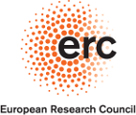Quantum Dots
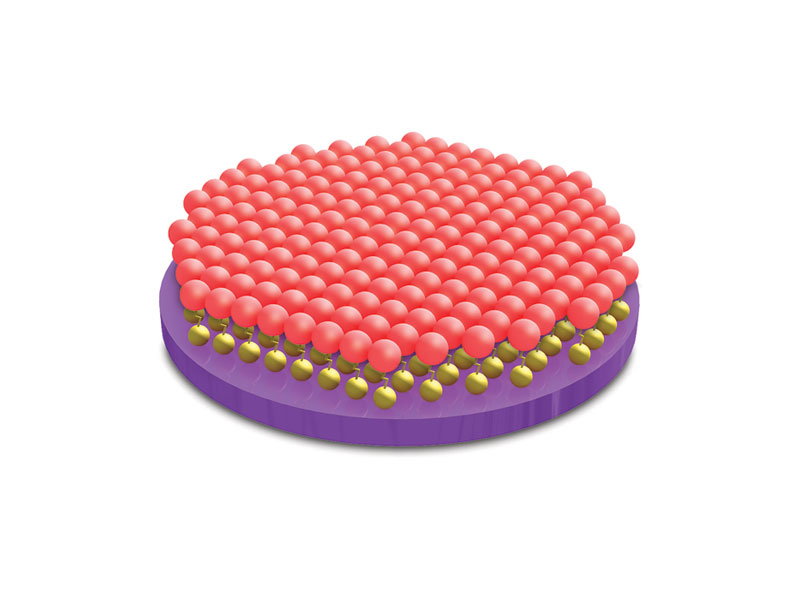 |
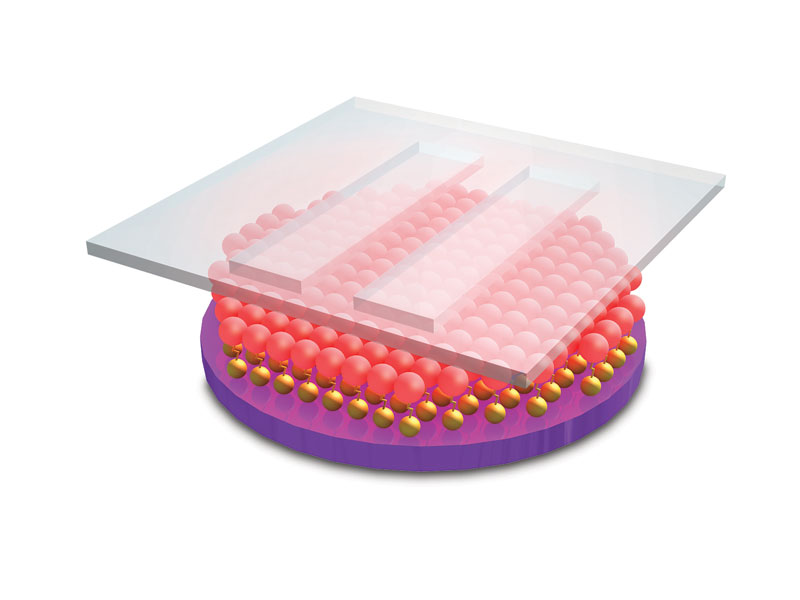 |
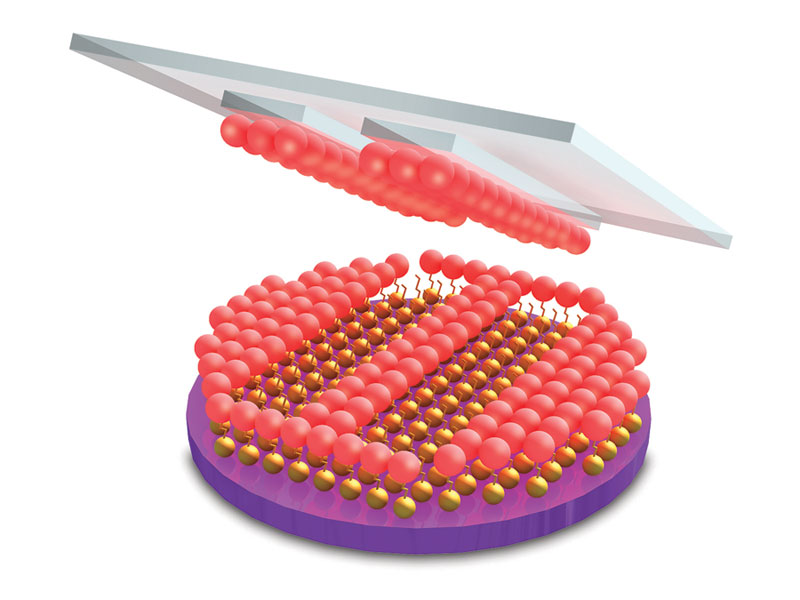 |
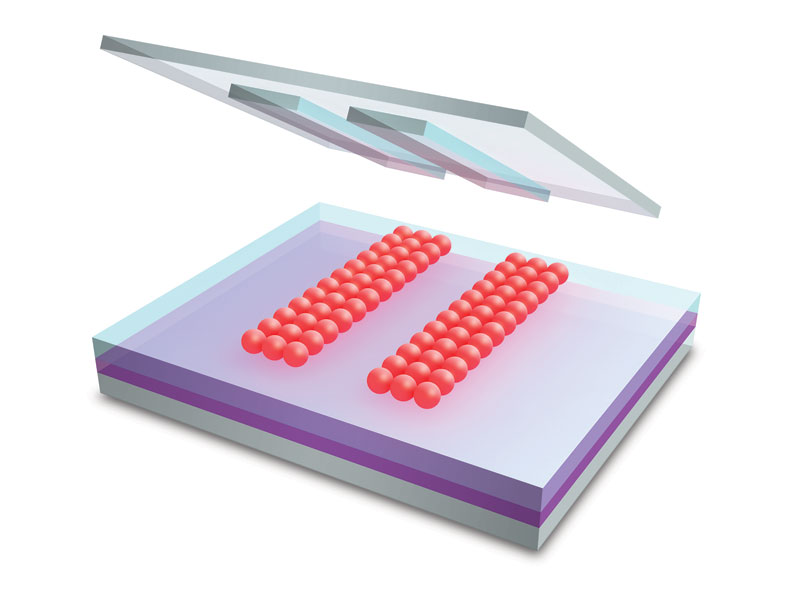 |
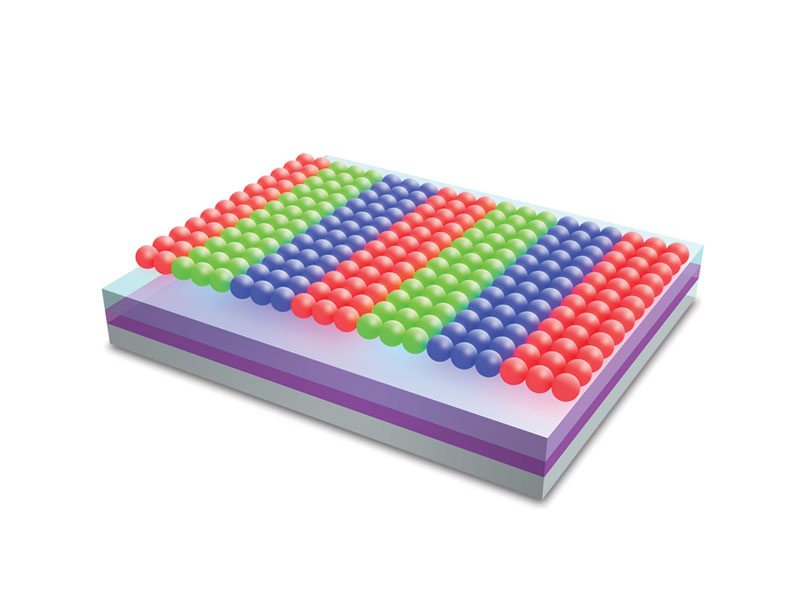 |
| Spin casting of uniform QDs mounted on donor substrates | An elastomer stamp with protruding stripes is pressed against the QDs | Sufficiently high peeling velocity leads to strong adhesion of the QD layer to the surface of the stamp |
The stamp is brought into contact with the receiving substrate, which comprises a device stack, and slowly peeled back |
Full Colour QD LED created by three individual colours patterned by a sequential transfer-printing process |
Quantum dots (QDs) are fluorescent semiconductor nanoparticles that absorb light energy and, depending on the size of the particle, re-emit the light in a different colour. Therefore, by tuning the size of these particles, you are able to control the colour of the light emitted to any colour in the spectrum.
The advantages of QDs is the fact that they only require a small amount of energy and can be deposited on virtually any substrate, including glass and plastic. They are also superior to organic luminescent materials due to their inherent luminescent properties, such as narrow spectral emission bandwidths, good photostability, controllable bandgap (through size tuning) and high photoluminescence quantum efficiency. These attributes contribute to a reduced production cost and allow QDs to be applied to a wide range of devices.
PROJECT
UniQDS (Universal Framework for Charge Transport in Quantum Dot Systems) is a five-year project funded by the European Research Council (ERC) Advanced Grant FP7.
To date, there has been little research concerning the charge transport dynamics and mechanisms of Quantum Dots (QDs) with basic models. The design and control of charge transport properties in QD systems is important for successful commercialisation as it plays a key role in determining the performance of QD devices such as LEDs/displays, photovoltaics, detectors and image sensors, and thin film transistors (TFTs). The project therefore aims to examine the underlying physics accounting for carrier dynamics, charge transport, and light-matter interaction in various QD systems. The work involves a great deal of inorganic QD design and synthesis, fundamental analysis and characterization, computational engineering, and viable integration technologies, as well as new/potential applications.
Through this understanding the project proposes to increase QD performance, including increased life span and sustainable brightness, and develop technologies and radically new devices, such as lightings and displays, photovoltaics, and field-effect transistors.


